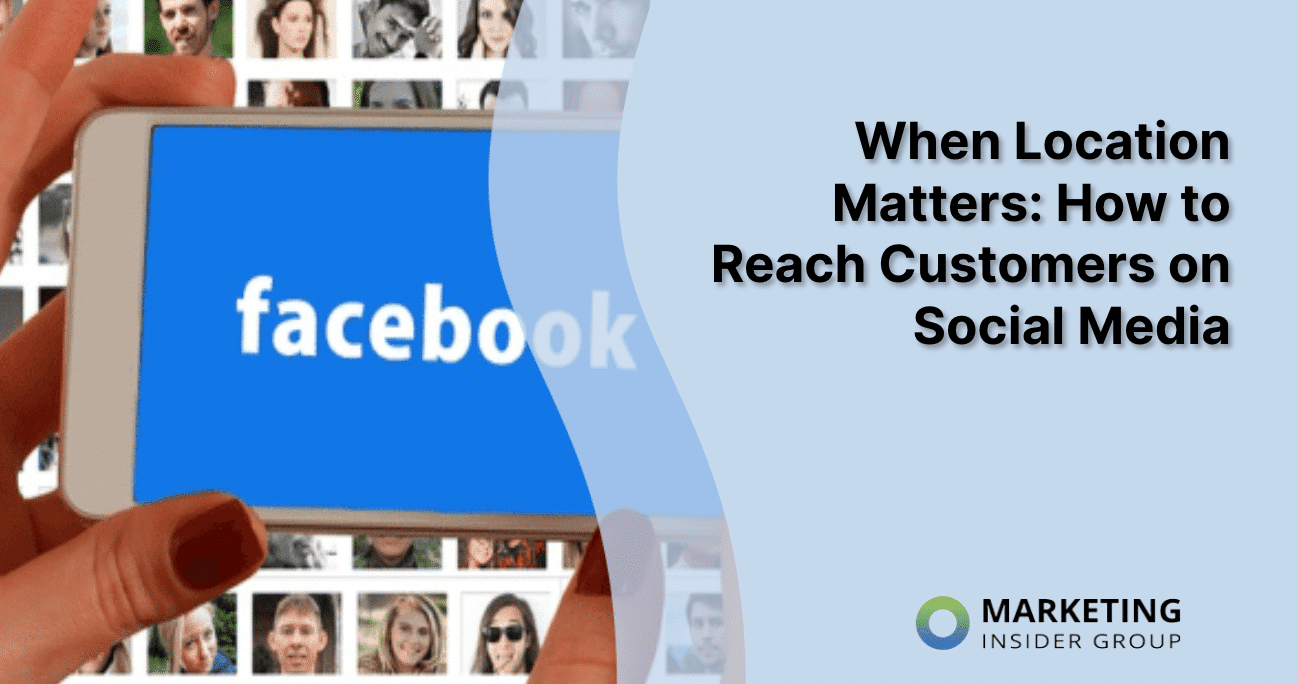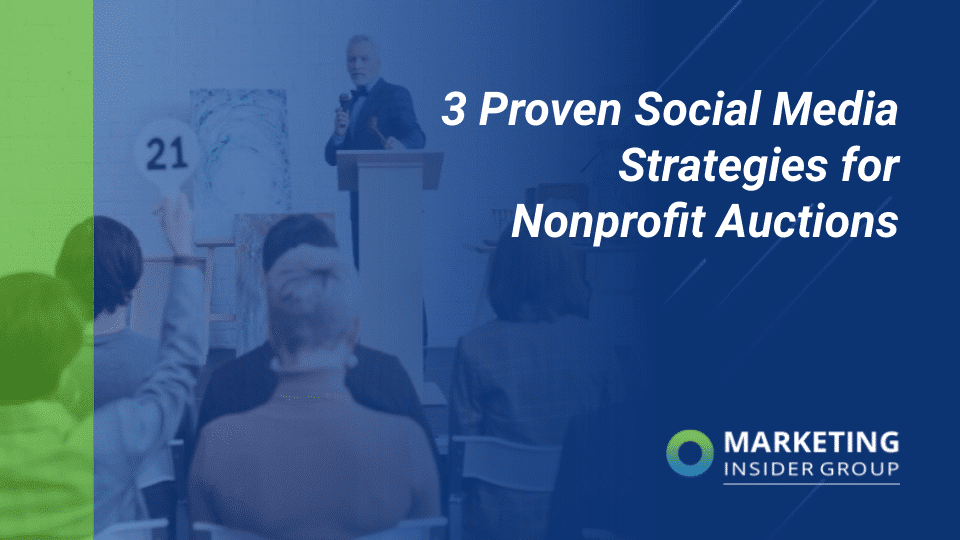
8 Steps To An Effective Social Media Strategy
Have you ever stumbled upon a social media account and been amazed by how creative human beings can be? The accounts that rise to the top have figured out the secret sauce to an effective social media strategy.
I’m sure you’ve realized by now that keeping up with the social media algorithms isn’t easy. It can take several days of uninterrupted efforts to get your initial plan together.
But it’s important to take the time to do it properly. If you’re going to spend days and weeks coming up with the plan, you better make sure it’s sustainable.
Quick Takeaways:
- Your social media efforts should be thoughtful and backed by demographic and psychographic research of your audience.
- Casting the widest net doesn’t equate to reaching the greatest amount of potential customers. Start small.
- An effective social media strategy will help you build deeper customer relationships, improve your customer satisfaction and provide clarity around your brand.
So what does a successful social media strategy look like?
Benefits of an effective social media strategy
We all know that social media is crucial today for businesses. But social media alone isn’t enough to drive growth. By building an effective strategy, you’re increasing your brand’s
- Awareness
- Authority
- Authenticity
- Engagement
- Efficiency
Social media platforms have blurred the lines of communication between businesses and customers. You can only maximize on the benefits of social media if you’re actively breaking down the walls and showing up.
Here are 8 steps to help you create one:
Step 1: Understanding Your Audience
The foundation of a successful social media strategy is understanding who your target audience is and why they care about what you have to offer. To do this, you need to observe a combination of demographics and psychographics.
Demographics
Demographics are statistics and descriptions of a group of people, such as their location, age, gender and occupation. Keep in mind that not all of these statistics and descriptions may be relevant for your business.
If you have your own website, there are several ways you can determine your audience’s demographics. One helpful tool is Google Adwords. If you don’t have a website yet, find a competitor or similar site and use that for your analysis.
Psychographics
Psychographics explain your audience’s lifestyles, values, opinions, interests and attitudes. You should try to answer these questions about your audience when doing your analysis:
- Why do they want to learn about your product or service?
- How important is your product or service to your audience? For example, is it part of their job or is it a personal interest?
- How do they like to learn and get their information from? Is it video, audio, text, etc., and on what device or channel?
- What questions do they typically have about your product or service?
- How knowledgeable are they about your industry and product or service?
Psychographics play an extremely important role in the success of your social media strategy, so as challenging as this may be, you want to make sure you do this part really well before moving on to the next step.
While there’s no tool that can directly get you the psychographic information you want on your target audience, there are a few places you can go to do this, such as:
- Interview existing clients
- Investigate website analytics
- Utilize subreddits
- Join community forums and focus groups
- Read social media and blog comments
As you find valuable information about your target audience, record these observations as they could come in handy when it comes time to content creation!
Step 2: Targeting Your Channels
If you’re already active on social media, do an audit of what’s working well for you (and be honest about what’s not moving the needle).
Consider the following questions:
- What’s working for you? Look at your insights and business analytics on each platform.
- Who is currently engaging with your posts? Is it your target audience?
- How do you compare to your competition? Are they growing at a rapid rate?
If you’re just starting out, you may be eager to get on every available channel out there. But it’s a good idea to start with 1-3 channels and focus all your efforts on those (or even master 1 before moving onto the next). Like any plan, your social media strategy needs to be sustainable in order for it to work.
You will get quicker and better results if you focus your time and effort on your 1-3 key channels, then expand as your business and team grow.
So how do you determine which social networks you should start with?
You need to find out where your audience hangs out, then start narrowing down your options.
Remember, age doesn’t give you the full picture though, so you want to look at your competitors and see which top social media platforms you should focus on. You can try to do this with BuzzSumo or Ahrefs.
Not every business CAN or even SHOULD be everywhere. Focus your energy on the platforms that will drive the most impact for you.
Step 3: Developing Your Content Strategy
Now that you have a better understanding of your target audience and the channels they use, it’s time to build out your content strategy. Think blog posts, videos, photography, quotes, quick tip.
The right kind of content will depend on your target audience and the channels you choose. It’s also important to share content produced by others as you don’t want to seem overly self-promotional.
You can also break up your content ideas into categories to help keep things organized and consistent. Check out some ideas below each category of ways you can incorporate diverse content into your plan!
Entertainment
What ridiculousness in Hollywood is headlining the media this week? Turn red carpet nights or the Royal Wedding into entertaining memes that relate back to your services or products.
But don’t let the fun stop there. More ideas include:
- Videos
- Lighthearted stories
- Pop culture references
Inspiration
If you stumble upon a quote that speaks to you and your mission, tack your business logo on the bottom of it and turn it into a graphic. Your posts don’t always have to be prize winners.
How else might your followers be inspired? Get creative by sharing more:
- Industry gurus
- Trends
- Before & afters
Education
Think about the core of your business. What is it that you do well, and how do you do it?
Now, think about how you can turn your knowledge into an evergreen asset that educates your customers without you shoving information down their throats. Tie it all up in a bow by creating an infographic or a video tutorial.
Create more graphics, posts or stories about anything, like:
- How to’s
- Tips and tricks
- FAQs
Oberer Homes, a custom home-builder in Dayton, OH, consistently shares helpful tips on home trends, tips and tricks to help educate their customers during their journey. Here’s a recent graphic they included in an article that outlined bathroom color trends.

Notice, rather than creating a graphic from scratch, they included another industry expert’s graphic because it did the trick!
Conversation
Utilize your captions to start conversations in the comments. Maybe you’re posting an unpopular opinion or hot take on an industry topic. Encourage your followers to join in on the conversation! You’ll also be able to gather some psychographic research here.
More examples of conversational posts include:
- Questions
- Fill-in-the-blanks
- Polls
Connection
Customers love to know what goes behind the scenes. Share a story of your product being created or packaged, or of you out for client visits on an average day at work. It makes you more relatable to them.
Here’s a few more ways you can connect with your audience:
- Personal wins
- Your “why”
- Shoutouts to businesses/followers
Promotion
If you’ve got a recent blog post that you’re super proud of, you should repurpose it for your social media accounts! Create graphics or make a video inspired by the content.
Some other examples of promotional posts include:
- Product launches
- Sales or discounts
- Client testimonials
Generally, it’s safe to follow the 80/20 rule of non-promotional to promotional content. And if you’re sharing your big launch and find yourself wanting to promote a bit more than usual, just be sure to sprinkle in other useful content around your posts!
What types of content should you share?
You can start by compiling a list of popular keywords for your topic or product/service. Use Adwords Keyword Planner as a starting point. Then go to BuzzSumo or Ahrefs and enter your keywords, and sort by the channel you’ve selected to focus on. This process will take some time, but it’ll be worth it at the end because you’ll have a list of proven topic ideas that your audience will be interested in.
Step 4: Finding Inspiration
Authenticity is first and foremost. You should show up as yourself on social media and be sure to represent your brand well.
But that doesn’t mean that you can’t draw inspiration from others who are doing it well!
Look to your favorite brands
What keeps you coming back to their page? What kind of content are you most drawn to as a viewer or potential buyer?
Apply those tactics to your strategy but make them your own!
Scroll on hashtags to see what’s trending
Mindless scrolling doesn’t have to be all that bad for you.
Pro tip: set a timer on your phone for 15 or 30 minutes to scroll through 1 or 2 hashtags. Whether you on the reels tab of Instagram or finding passionate dialogue on Twitter, try to leave with just 1 new content idea for yourself.
Don’t let the inspiration stop there, though. Start on a blank sheet and organize your ideas into sections or tabs for each category of content. You’ll be amazed at what you’re capable of when you sit down and let the ideas flow.
Ask your followers
They’re there for a reason. What makes them choose to stick around?
Don’t be ashamed to ask them what kind of content they’d like to see more of. You can do this through your regular posts, stories, or even your email list if you’ve got one.
For maximum engagement on posts, work smarter and not harder.
Step 5: Building a Content Calendar
Now that you’ve started growing your following and readership, you must be really excited about producing and sharing more content, right? You have to build a content calendar so that you’ll actually stick to your goals.
Frequency
There’s tons of dialogue around how often you should post on each platform. You could drive yourself nuts trying to hit each algorithm perfectly.
You may need to share more or less than these numbers, so try testing it out to optimize for your strategy. Here’s a general guide:
- Instagram (feed): 3-7 times per week
- Facebook: 1-2 times per day
- Twitter: 1-5 times per day
- LinkedIn: 1-5 times per day
- Blogs: 1-2 times per week
When you’re in your early days, these frequencies might not be attainable, and that’s okay. If Instagram is where it’s at for you, don’t give up entirely because you can’t reach the minimum number of posts. Start somewhere!
Variety
By combining what you learned in steps 3 and 4, mix in valuable content that your audience will appreciate. Use your social media feed as a repository for all of the things you wish your potential customers knew about your industry, and a place to bring your audience together.
Step 6: Automating For Success
The key to social media success is consistency.
Don’t get stuck in analysis paralysis where you’re taking weeks just to decide what to post next. If you have a calendar to schedule your messaging, you’re more likely to stick to it.
But if you find that the best time for you to post is 5 a.m., it may not be feasible for you to consistently get up every day at 5 a.m. to post content. The easiest way for you to post consistently is to use tools to automate you content flow.
There are lots of free and paid tools out there to help you automate your posts, such as Hootsuite and Buffer. We use Hootsuite to automatically post every article across all our employee LinkedIn accounts.
Step 7: Maximizing Traffic
New content takes time and resources to create. To maximize the efforts you put into producing new content, you want to be sharing old posts as well as new content. This can help double and in some cases even triple your traffic.
You don’t want to be sharing the same post four times a day though. For example, on Twitter, you may wish to promote an old post 2-3 hours after your first tweet, then promote again the next day, next week, next month, and so on.
To maximize traffic, you should also use different descriptions when promoting old posts. If you use the same descriptions, your followers and readers will likely see these posts as spamming and will ignore them.
You might also consider reaching out to influencers in your network and encourage them to share the post with their audience. This will help you gain even more exposure for your content.
Step 8: Tracking Results
To see what’s working and isn’t working with your social media strategy, you need to measure your results so you know what to improve on in the future.
You want to record all your social shares, such as impressions, shares and clicks, to see which content pieces and social media posts are getting the most clicks and engagement and are pushing traffic to your website, and which ones are not. Google Analytics, Buffer, and Hootsuite are great tools to help you collect these stats.
When you track these numbers regularly, you’ll learn what gets the most clicks and reads, and you can go back and revise your strategy to improve your results.
Now that you have the knowhow, it’s time to go build your social media strategy!
Do you want to use some of the marketing strategies seen here on MIG’s site but need some help or advice? Marketing Insider Group has a team of 35+ experienced writers ready to produce content for YOUR business. Check out our weekly blog content service or schedule a free consultation.






